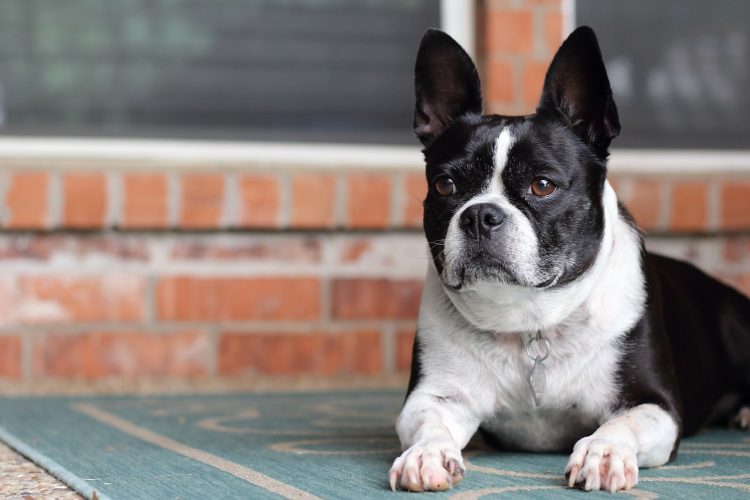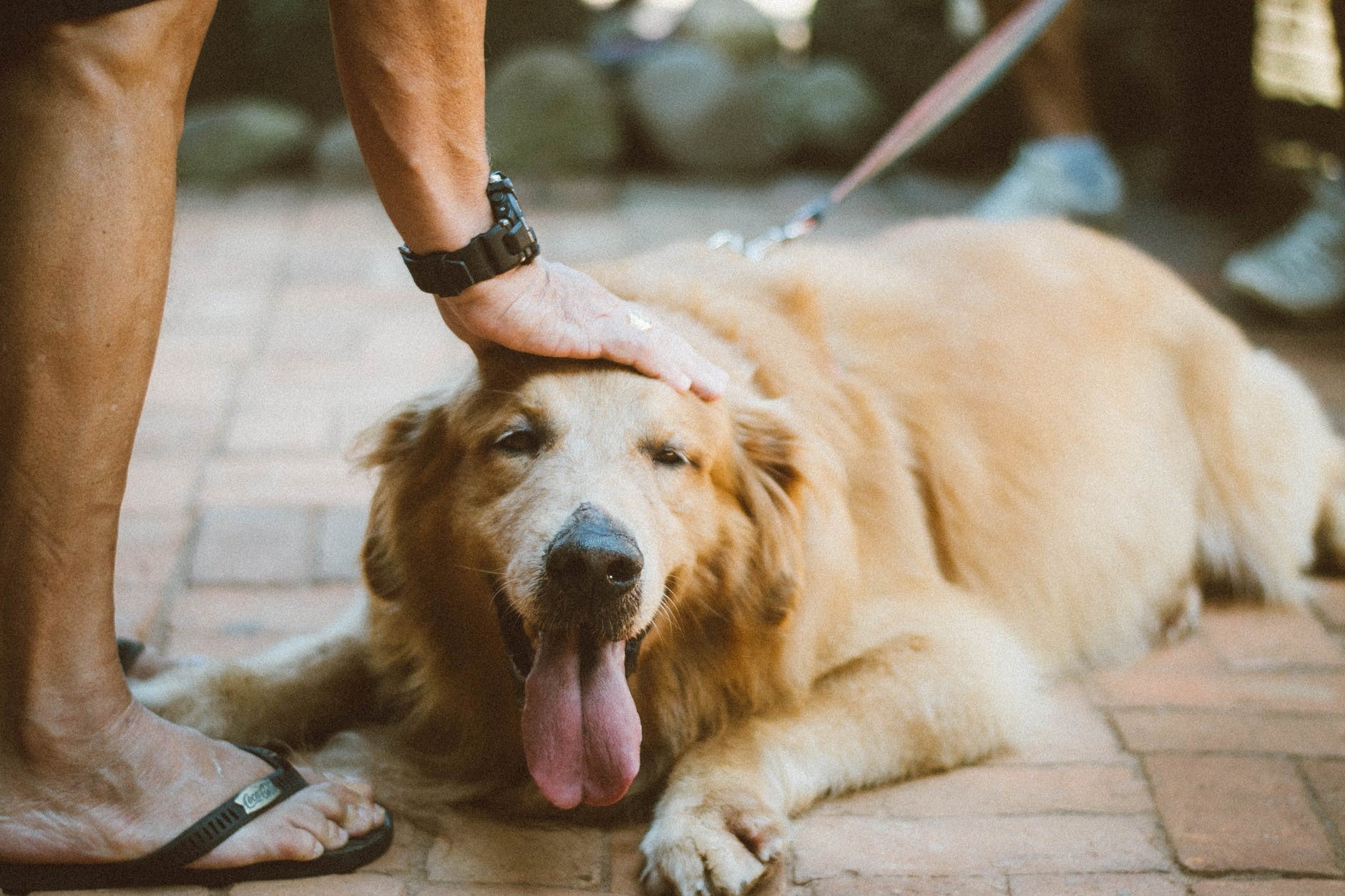How to Teach a Dog to Lay Down – 4 Pro Tips
Devoted companionship, unconditional love, and constant entertainment are some of the reasons a dog owner knows that life is much better with a canine companion.
Spending time with a dog can do wonders for your well-being. They offer loads of affection, emotional support, stave off feelings of social isolation and ease your worries.
Pet parents will agree that teaching your dog to lay down and be still when in public can be a real challenge. It is vital to teach your dog the “down” cue and transition them from laying down in your home to following and obeying the cue in real-world settings.
You can likely follow tips on how to teach a dog to lay down at home because dogs often learn best in less distracting, less stressful, familiar environments.
Once your canine companion has mastered the technique, you’ll want to expand that knowledge beyond the comfort of home.
Doing so will ensure that your dog will follow your cue while out for a walk or in a new place regardless of what they may encounter along the way. The distraction of other people, animals, scents, and noise will not prevent them from following your command.
Why It’s Important to Teach Your Dog How to Lay Down
It makes sense to persevere with teaching your dog the lay down cue. Your dog naturally sleeps laying down so it is a comfortable position that dogs can hold for long periods of time.
Teaching your dog to lay down using a verbal command or hand signal is a great strategy to master for times when your dog will accompany you to a local shop, while visiting with friends, or while waiting your turn at the vet’s office.
When combined with teaching your dog to stay on a mat, a comfortable lay down position is also a helpful command to deter problematic household behaviors.
Being able to change your dog’s mood from mischievous to mellow will prove to be a valuable skill at home and anywhere else.

4 Pro Tips to Get Your Dog to Lay Down in Any Environment
There is no magic spell for dog training and teaching obedience. Your success in training your dog to lay down is based on lots of practice, the tools you apply to your training, your reliability, and your consistency. The better you know your dog’s personality and what motivates them, the faster they will learn. Some of the basic lay down cue tips include:
Tip 1: Be Prepared
It is key to start your dog’s training in a quiet and calm place, such as your living room. This is a room with no distraction, temptation, or interruption and it allows you and your dog to feel happy and relaxed. Here, you will both be able to concentrate and be successful.
You will also need to have a reward ready for your dog. This should be something they really enjoy. You will need plenty of rewards to start, so their favorite tasty and small treat is a great idea.
You should pre-select specific words to use during training so your dog will know they’re getting it right. You can say things like “right” or “yes” every time your dog does what you want.
This will tell them that their reward is coming too. Ensure that your timing is spot on by immediately letting your dog know they’ve done well and follow your “yes” or “right” with a reward.
Instead of words, some dog owners prefer to use a clicker. Using the clicker at the exact time your dog completes the proper task will signal to them that they’ve done well.
It’s a simple technique that offers a consistent message. Like your voice, a clicker makes a specific sound that your dog will come to recognize as praise.
Tip 2: Use a Lure
The lure and reward method can be an effective way to teach a dog to lay down. It is essentially using a lure to guide your dog into a laying down position then rewarding them.
It helps the dog to strive to get it right from the start and does not involve pulling or pushing them into position, which can hurt your dog or cause them to fear you.
Initially, you will lure your dog into position without saying “down”. At this point, you do not need to say anything, and your dog does not know what the word means. Begin with your dog in the sitting position and hold the treat near their nose.
In a slow and smooth motion, move the delicious motivator downward in front of their chest and continue in a straight line between their front legs until the treat reaches the floor. Your dog will naturally follow the treat, lower its back, or creep forward with its front paws. As soon as their stomach touches the floor, say “yes” and quickly give them their well-deserved treat.
Tip 3: Repeat Your Training
Repeat your training with the lure several times until your dog is reliably following your direction and laying down becomes second nature. Remember to use a clicker or say “yes” or “right” and quickly give them their reward as soon as their stomach touches the floor, and they are lying down.
Now is the time to introduce the command “down”. As soon as your dog gets into the correct position, say “down” and they’ll make the connection between the word and their action.
Remember to keep on saying “yes” or use your clicker when they lay down and follow with a small treat. Repeat this several times so that your dog has many opportunities to connect the word “down” with laying down.
If your dog is struggling, take a break and come back to it. If you approach training gently and go at your dog’s pace, they will be more likely to enjoy the process and remember what they’ve learned. If you start feeling frustrated, your dog will sense this and might not be as receptive to the training.
Tip 4: Try Without a Lure
Continuing your training without a lure will be the next hurdle. You can say “down” as you move your hand from your dog’s nose to the floor just like in the first steps, but this time without holding a treat.
This will tell you if your dog has truly learned the action. If your dog is struggling without the treat in your hand, you can continue to use it for a little while before trying again.
Eventually your dog will catch on and be able to perform the movement without the treat but remember to use your command and praise words accordingly.
Your dog may find it challenging to practice in busier, more distracting places. Therefore, you should choose locations carefully to make it easier or use extra-tasty treats to reward their efforts.
In some instances, you might need to go back to basics when training in a new place, but your dog should work through the steps as long as you are clear, calm, and consistent.
Being calm and gentle is key. Never grab hold of your dog when they approach you as this can send the wrong message. Kneel beside them instead of head-on while offering them a small treat while you take hold of their collar.
Show your dog that you can be trusted and predictable by praising them for following instructions and responding to their name. Never call your dog over to you for punishment if they make a mistake as this could lead to mistrust and fear.

Final Thoughts
Most dog lovers are often skeptical about training tips; even simple ones on how to teach a dog to lay down. They may think only a skilled trainer can effectively teach a dog to be obedient, but most trainers base their approach on the dog owner learning the commands and the techniques and ultimately being in charge.
Training your dog to lay down is seen as a relatively straightforward job, but you might find you have a tricky dog who does not like following orders.
Luckily, almost every dog has a weakness for food or treats. You should focus on finding a reward your dog is crazy for and use it to help assert your control during the training process.
A puppy will be a fast learner even if they are stubborn. You can see encouraging results in about five days. If your dog is older and has lived without instruction for many years, then you should prepare yourself for a challenge that calls for hard work and patience. With perseverance and consistency, you will only need about ten days to see consistent results in a mature dog.
Once you’ve put in the time and effort, one of the greatest perks of being able to get your dog lay down is that after a long day of training, they won’t be standing in front of the TV when it’s time to relax in the evening!

